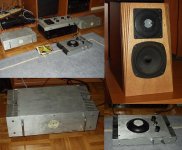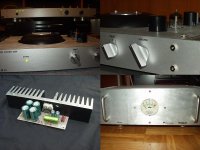TGC - technical data
TECHNICAL DATA
POWER SUPPLY
- transformer toroid 230V/8*12V/180VA
- output amps rails 2*32V DC(2*24V), two bridge with doubled diode BYW95C
caps Samsung 470uF/100V, four for each amp
- tube buffer rails 2*45V (half wave voltage doubler from 1*36Vac), two BYW95C, CLC network, 470uF Samsung +100mH+6800uF Panasonic
- tube heating 6V DC, 4xBYW26c, 2* 1000uF Nichicon, stabilized with 7806, 1*1000uF Nichicon
INPUT
usual gold plated cinches, Alps selector 2*1in3, Preh pot 2*10klog
TUBE BUFFER
tube E88CC (NOS Tesla CH), or ECC88 (OS Siemens from scopes)
resistors - usual metal film
OUTPUT AMP
LM 3875 - inverted setup - gain ca 30dB
input cap 2u2/250V ROE MKT, LPF 2*680pF ROE MKC, 2*47nF/160V ROE MKP
resistors - usual metal film
output DC offset about -5mV
POWER ON DELAY
relay 10A/30VDC on output
INPUT IMPEDANCE
10k
FREQUENCY RANGE
10Hz-20kHz (-1dB, -2dB)/1W/8ohm/THD=0,1%/IMD2=0,075%
OUTPUT POWER
36Vpp - 20W RMS (8ohm/both amps on/THD lower than 0.15% 100Hz-20kHz)
24Vpp - 18W RMS (4ohm/both amps on/THD lower than 0.25% 100Hz-20kHz)
NOISE FLOOR
-56dBV
DIMENSION
330*200*40mm
WEIGHT
about 5kg
TECHNICAL DATA
POWER SUPPLY
- transformer toroid 230V/8*12V/180VA
- output amps rails 2*32V DC(2*24V), two bridge with doubled diode BYW95C
caps Samsung 470uF/100V, four for each amp
- tube buffer rails 2*45V (half wave voltage doubler from 1*36Vac), two BYW95C, CLC network, 470uF Samsung +100mH+6800uF Panasonic
- tube heating 6V DC, 4xBYW26c, 2* 1000uF Nichicon, stabilized with 7806, 1*1000uF Nichicon
INPUT
usual gold plated cinches, Alps selector 2*1in3, Preh pot 2*10klog
TUBE BUFFER
tube E88CC (NOS Tesla CH), or ECC88 (OS Siemens from scopes)
resistors - usual metal film
OUTPUT AMP
LM 3875 - inverted setup - gain ca 30dB
input cap 2u2/250V ROE MKT, LPF 2*680pF ROE MKC, 2*47nF/160V ROE MKP
resistors - usual metal film
output DC offset about -5mV
POWER ON DELAY
relay 10A/30VDC on output
INPUT IMPEDANCE
10k
FREQUENCY RANGE
10Hz-20kHz (-1dB, -2dB)/1W/8ohm/THD=0,1%/IMD2=0,075%
OUTPUT POWER
36Vpp - 20W RMS (8ohm/both amps on/THD lower than 0.15% 100Hz-20kHz)
24Vpp - 18W RMS (4ohm/both amps on/THD lower than 0.25% 100Hz-20kHz)
NOISE FLOOR
-56dBV
DIMENSION
330*200*40mm
WEIGHT
about 5kg
THDvs. POWER, FREQUENCY
THD graph shows decent absolute values of harmonics distortion at all output powers and frequencies. It's interesting that distortion falls off with the increase of power for frequencies above 200Hz and stays below 0.1%. My guess is that this happens because there is some kind of noise (100Hz) at the output, resulting from imperfect power supply and the star-grounding method used, which is included in measuring THD results (that's why the noise floor reads only -56dBV). But, the most important quality is, IMHO, that distortion is relatively constant throughout the entire frequency range, which ultimately gives very good sonic results.
THD graph shows decent absolute values of harmonics distortion at all output powers and frequencies. It's interesting that distortion falls off with the increase of power for frequencies above 200Hz and stays below 0.1%. My guess is that this happens because there is some kind of noise (100Hz) at the output, resulting from imperfect power supply and the star-grounding method used, which is included in measuring THD results (that's why the noise floor reads only -56dBV). But, the most important quality is, IMHO, that distortion is relatively constant throughout the entire frequency range, which ultimately gives very good sonic results.
Attachments
Kn vs POWER/FREQUENCY
Graph with the values of individual harmonics components reveals yet another good side of the amp (again, IMHO) - harmonics values drop uniformly as the factor 'n' increases and this ratio is quite constant for the entire frequency range, regardless of power or load.
Graph with the values of individual harmonics components reveals yet another good side of the amp (again, IMHO) - harmonics values drop uniformly as the factor 'n' increases and this ratio is quite constant for the entire frequency range, regardless of power or load.
Attachments
THD vs. OUTPUT POWER at 1kHz
THD/output signal amplitude ratio Graph, measured at 1kHz (with filters HP 400Hz, LP 80kHz), shows a constant distortion value for the amplitude range 2Vpp to ca 40Vpp (50mW to 20W on 8ohm).
Measurements were made with Neutrik 3337 analyzer (unfortunately, my plotter isn't working so I can't show the original diagrams - I had to draw the graphs myself, based on the results tables).
To be continued ...
Regards
THD/output signal amplitude ratio Graph, measured at 1kHz (with filters HP 400Hz, LP 80kHz), shows a constant distortion value for the amplitude range 2Vpp to ca 40Vpp (50mW to 20W on 8ohm).
Measurements were made with Neutrik 3337 analyzer (unfortunately, my plotter isn't working so I can't show the original diagrams - I had to draw the graphs myself, based on the results tables).
To be continued ...
Regards
Attachments
Yes, nice work Moamps! What I like about this hobby is that it doesn't work by just throwing money at it. Half the fun is getting results the cheapest way possible and that requires a bit of thought!
Your transformer screen is brilliant. I have often thought that I would like to live next to the local tip and be able to look through all the things that are thrown away every day. Then I could really build some wild hi-fi
Your transformer screen is brilliant. I have often thought that I would like to live next to the local tip and be able to look through all the things that are thrown away every day. Then I could really build some wild hi-fi

It seems that His Holiness didn't manage to seriously distract the die-hard croatian audiophiles
Holy Hiragas! Don't say they've made that a sin now too! I don't suppose that we could convince his Vaticaness that it's a legitimate form of birth control

But... how does it sound !?!? Does it ?
How can it sound? Like Peter Daniel's GC only made with nasty parts, no attempt for resonance control, relay at output and a cathode follower at input. Based on pictures only i would say around 70% of the potential sound is realised. The presence of a cathode follower baffles me, but that's just me.
And it really looks gorgeous.
peter
Based on pictures only i would say around 70% of the potential sound is realised.
Pppppppppptttttttttttttppppppppppppppppp!!!!!!!!!!!
You should try to make some money with your skills....evaluating sound by looking at pictures....you should get an act at one of the hotels in Las Vegas!
evaluating sound by looking at pictures
It's very difficult to claim something will sound great based on component selection, circuit topology and vibration control and quite easy to draw the opposite conclusion if all three have been neglected. With luck it may sound pleasant but the full potential remains unfulfilled.
HGC listening test
Hi,
Listening tests
Fine print: First of all, I'd like to stress that the results of this test should not and cannot be applied to all amps of this type. They are based on my own impressions (and of some people close to me) about the absolute quality and relative listening quality of this amp in comparison with some other amps. Listening preferences and hearing abilities vary from person to person so if I think that a piece of equipment works really well it's by no means meant as a general truth. This been said, I'd like to ask all those who will disagree with me to acknowledge the idea that this is, by default, a highly subjective account of my listening experience and that I have no pretension whatsoever to impose my conclusions on this esteemed readership or participate in discussions (or arguments?) about personal listening preferences.
I've been 'fiddling' with various amp designs for quite some time now but it was not until I read some interesting discussions here and saw some equally interesting projects that it dawned on me to design and build an amp 'trilogy' of sorts and draw my own comparisons and conclusions. The idea was not to try and build THE ultimate amp but to build three different amps that would be decent enough for some meaningful conclusions to be drawn. I wanted the trilogy to include an A class amp Pass Aleph 3 (small version/15W), a GC and a SET with 6C33. Actually, I had already built an Aleph3 and was pleased with it. When I was deciding on what Gainclone to build (chips, topology), I was highly influenced by Joe Rasmussen's excellent thread with some great suggestions on how to improve a typical Gainclone. Thank you Joe Rasmussen.
So, I built myself a hybrid version of a Gainclone, using the most inexpensive and easily accessible elements and parts, for which reason I had to implement things a bit differently than originally suggested by Joe. I tested it with ordinary consumer equipment like Sony QS CD and SACD/DVD players, Sony speakers, JBL Control 1 and Control 5 speakers, and DIY 2way bassreflex speakers of a friend of mine (with Thiel C23 high and Davis Velvet 17 midbass) standard Mogami interconnectors, my Aleph3 and my DIY tube preamp. Test material was based on popular choice ) of those present and included Dire Straits Live - On the Night, Cesaria Evora's Anthology, Norah Jones's Come Away With Me, Diana Krall - The Look of Love, The Crusaders-Rural Renewal, etc.
) of those present and included Dire Straits Live - On the Night, Cesaria Evora's Anthology, Norah Jones's Come Away With Me, Diana Krall - The Look of Love, The Crusaders-Rural Renewal, etc.
The GC with a buffer definitely sounded better than the GC without it because soundstage was more clearly defined, vocals were more natural, wind instruments also more defined, piano sounded less aggressive, more balanced and more integrated with the whole sound. Highest tones, which sounded aggressive and irritating on lower-quality speakers, became more pleasant and silky-sounding (e.g. Pink Panther Theme). Overall, the music was much less straining to the ear so it could be listened to and played almost indefinitely, even with the volume turned up very loud, without causing any fatigue. I hadn't been able to achieve any of this with the GCs I had built before (TDA or LM).
Although I'm aware that some people on this forum tend to claim that GC sounds better than Aleph, I must say I have never gotten such impression no matter how hard I (or those around me) tried to see their point. Aleph turned out to beat a typical GC by two classes at least. However, a hybrid GC was another story altogether and indeed offered serious competition for Aleph (they have similar distortion range) as well as it somehow managed to compensate for smaller speaker imperfections, which Aleph seemed to highlight rather mercilessly although it did have a bit better control over the low-frequency range than GC.
To sum things up, HGC is IMHO an extremely good idea which is worth an extra buck (or quid, or yen, or kuna or... oh yes, euro ) and effort (as its design and implementation are considerably more demanding). For those who tend to distrust the sound of an ECC88 tube or a cathode follower as such, I can only say they should give it the benefit of the doubt as the thing apparently (under the right circumstances and with His Holiness's blessing showered upon one
) and effort (as its design and implementation are considerably more demanding). For those who tend to distrust the sound of an ECC88 tube or a cathode follower as such, I can only say they should give it the benefit of the doubt as the thing apparently (under the right circumstances and with His Holiness's blessing showered upon one  ) is capable of a surprise or two.
) is capable of a surprise or two.
A friend of mine and I are planning to do a few more listening tests with various speakers (Tannoy, Fostex,...) and GC amps (LM and TDA). He's famous/notorious for his 'golden ears' and an outspoken hatred of all (and I mean ALL) cathode follower concepts. I think he may be able to contribute constructively to the subject, which will conclude the final chapter of 'Amp Trilogy', Book 2 )
)
Regards
Hi,
Listening tests
Fine print: First of all, I'd like to stress that the results of this test should not and cannot be applied to all amps of this type. They are based on my own impressions (and of some people close to me) about the absolute quality and relative listening quality of this amp in comparison with some other amps. Listening preferences and hearing abilities vary from person to person so if I think that a piece of equipment works really well it's by no means meant as a general truth. This been said, I'd like to ask all those who will disagree with me to acknowledge the idea that this is, by default, a highly subjective account of my listening experience and that I have no pretension whatsoever to impose my conclusions on this esteemed readership or participate in discussions (or arguments?) about personal listening preferences.
I've been 'fiddling' with various amp designs for quite some time now but it was not until I read some interesting discussions here and saw some equally interesting projects that it dawned on me to design and build an amp 'trilogy' of sorts and draw my own comparisons and conclusions. The idea was not to try and build THE ultimate amp but to build three different amps that would be decent enough for some meaningful conclusions to be drawn. I wanted the trilogy to include an A class amp Pass Aleph 3 (small version/15W), a GC and a SET with 6C33. Actually, I had already built an Aleph3 and was pleased with it. When I was deciding on what Gainclone to build (chips, topology), I was highly influenced by Joe Rasmussen's excellent thread with some great suggestions on how to improve a typical Gainclone. Thank you Joe Rasmussen.
So, I built myself a hybrid version of a Gainclone, using the most inexpensive and easily accessible elements and parts, for which reason I had to implement things a bit differently than originally suggested by Joe. I tested it with ordinary consumer equipment like Sony QS CD and SACD/DVD players, Sony speakers, JBL Control 1 and Control 5 speakers, and DIY 2way bassreflex speakers of a friend of mine (with Thiel C23 high and Davis Velvet 17 midbass) standard Mogami interconnectors, my Aleph3 and my DIY tube preamp. Test material was based on popular choice
The GC with a buffer definitely sounded better than the GC without it because soundstage was more clearly defined, vocals were more natural, wind instruments also more defined, piano sounded less aggressive, more balanced and more integrated with the whole sound. Highest tones, which sounded aggressive and irritating on lower-quality speakers, became more pleasant and silky-sounding (e.g. Pink Panther Theme). Overall, the music was much less straining to the ear so it could be listened to and played almost indefinitely, even with the volume turned up very loud, without causing any fatigue. I hadn't been able to achieve any of this with the GCs I had built before (TDA or LM).
Although I'm aware that some people on this forum tend to claim that GC sounds better than Aleph, I must say I have never gotten such impression no matter how hard I (or those around me) tried to see their point. Aleph turned out to beat a typical GC by two classes at least. However, a hybrid GC was another story altogether and indeed offered serious competition for Aleph (they have similar distortion range) as well as it somehow managed to compensate for smaller speaker imperfections, which Aleph seemed to highlight rather mercilessly although it did have a bit better control over the low-frequency range than GC.
To sum things up, HGC is IMHO an extremely good idea which is worth an extra buck (or quid, or yen, or kuna or... oh yes, euro
A friend of mine and I are planning to do a few more listening tests with various speakers (Tannoy, Fostex,...) and GC amps (LM and TDA). He's famous/notorious for his 'golden ears' and an outspoken hatred of all (and I mean ALL) cathode follower concepts. I think he may be able to contribute constructively to the subject, which will conclude the final chapter of 'Amp Trilogy', Book 2
Regards
Attachments
wiligruen said:Hi moamps,
You mention a SET with 6C33, but you have not compared it against GC or Aleph? I would be very interested to hear how a tube SET does compete here.
Regards
Wilfried
Hi,
Set with 6C33 will be my next project, which means I'm going to build it in the next couple of months. I'm sorry if anyone understood that I had all 3 amps already built. Please, have patience.
Regards
Hi Moamps
An interesting review. I'll certainly be looking forward to your friends commments as well. We share the same hatred Especially when an ecc88 is involved.
Especially when an ecc88 is involved.
regards
peter
and an outspoken hatred of all (and I mean ALL) cathode follower concepts. I think he may be able to contribute constructively to the subject
An interesting review. I'll certainly be looking forward to your friends commments as well. We share the same hatred
regards
peter
- Status
- This old topic is closed. If you want to reopen this topic, contact a moderator using the "Report Post" button.
- Home
- Amplifiers
- Chip Amps
- Tube with Power IC Output Stage - JLTi
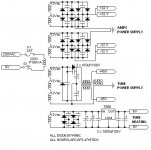
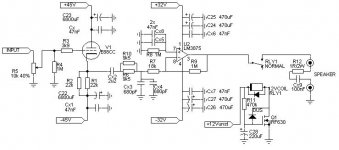
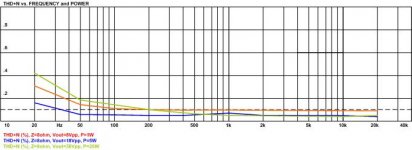
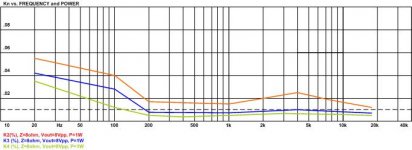
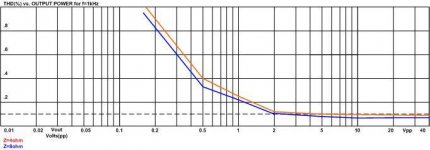


 ?
?